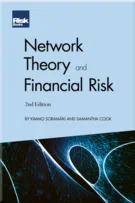Managing Privacy and Digital Identities with Blockchain Technology
Steven J Ehrlich and Rouven Heck
Introduction
Blockchain Technology: Emerging Opportunities and Risks
Permissioned Versus Permissionless Blockchain
Cryptocurrencies, Digital Assets and ICOs: Definitions, Valuation and Investment Opportunities
Code is Not Law: Code Can be a Language Used to Create Smart Contracts
Smart Contracts: Definition and Uses
Managing Privacy and Digital Identities with Blockchain Technology
Regulation of Blockchain Technology
Blockchain Use Cases: Reference Data
The Humanitarian Space and Business Opportunity of Blockchain
The Impact on Supply Chain Opportunities
The Promises and Limitations of Blockchain: Taking Stock and Lessons Learned
Blockchain Use Cases in Financial Markets and Beyond
Privacy is one of our oldest and most fundamental human rights, going back centuries. In fact, the legal protection of privacy rights began in England in 1361 with the Justices of the Peace Act, which called for the arrest of “peeping Toms” and “eavesdroppers”. Over 500 years later, Justices Samuel Warren and Louis Brandeis (1890) defined privacy as “the right to be left alone” in their seminal article, “The Right to Privacy”.
Despite these longstanding traditions, the concept of privacy is constantly being redefined, often in response to the advent of a new communications technology, such as the telephone, printing press or Internet messaging. In today’s world, highlighted by the emergence of major technology companies and the global reaction to the 2013 Edward Snowden revelations concerning government surveillance, citizens fret about their inability to manage their identities online and dictate who can access, collect and utilise their personal data. One report (Rainie, 2016) has illustrated how large the chasm is between how individuals feel about data privacy issues in relation to corporate actions. For example, the study found that although 86% of people in the US have
Copyright Infopro Digital Limited. All rights reserved.
As outlined in our terms and conditions, https://www.infopro-digital.com/terms-and-conditions/subscriptions/ (point 2.4), printing is limited to a single copy.
If you would like to purchase additional rights please email info@risk.net
Copyright Infopro Digital Limited. All rights reserved.
You may share this content using our article tools. As outlined in our terms and conditions, https://www.infopro-digital.com/terms-and-conditions/subscriptions/ (clause 2.4), an Authorised User may only make one copy of the materials for their own personal use. You must also comply with the restrictions in clause 2.5.
If you would like to purchase additional rights please email info@risk.net









